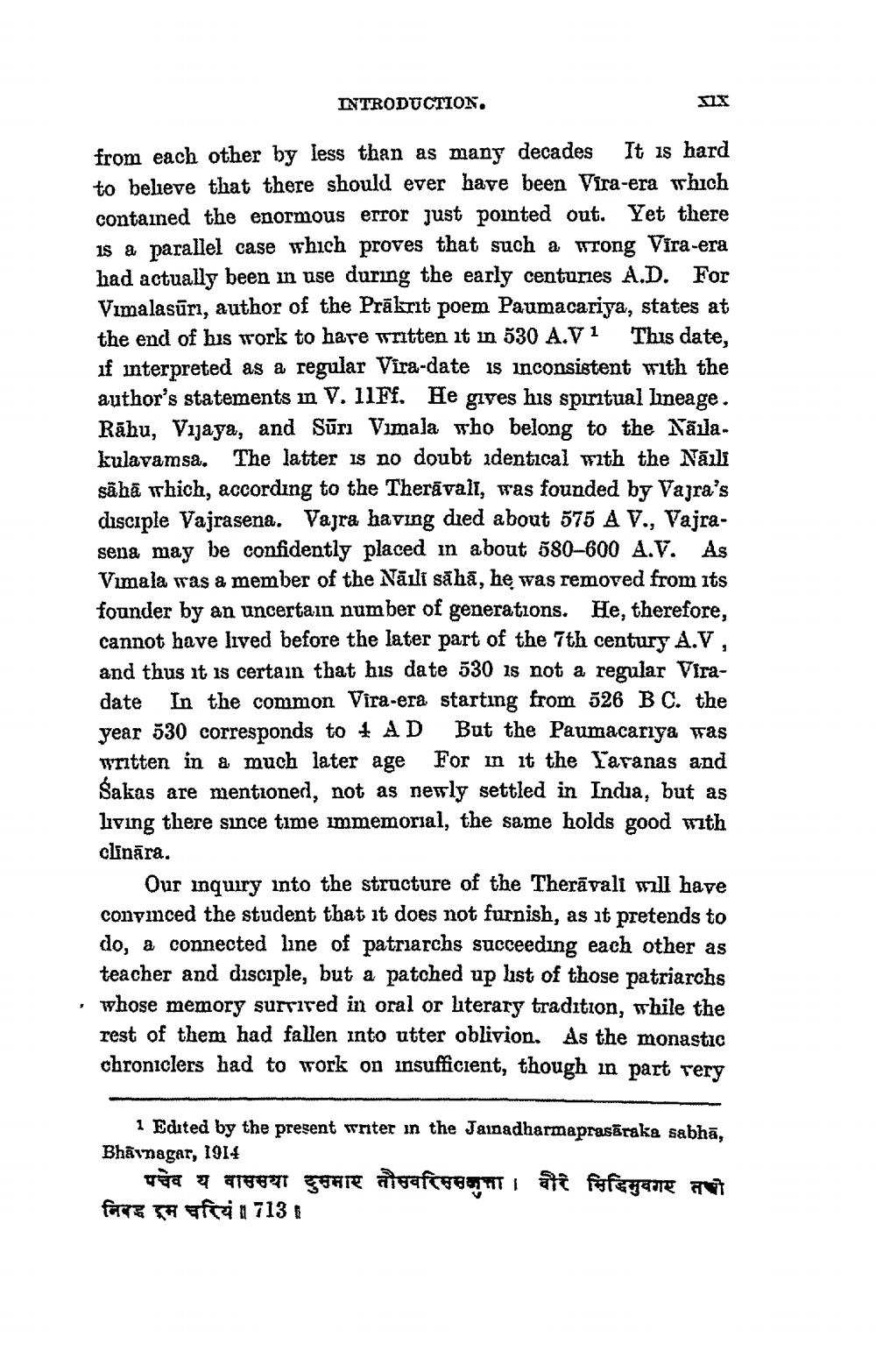________________
INTRODUCTION.
from each other by less than as many decades It is hard to believe that there should ever have been Vira-era which contained the enormous error just pointed out. Yet there is a parallel case which proves that such a wong Vira-era had actually been in use during the early centuries A.D. For Vimalasūri, author of the Prākrit poem Paumacariya, states at the end of his rork to hare wntten it in 530 A.V1 This date, if interpreted as a regular Vira-date is inconsistent with the author's statements in V. 11Ff, He gives his spiritual lineage. Rābu, Vijaya, and Sūri Vimala who belong to the Nãila. kulavamsa. The latter is no doubt identical with the Nārli sābā Thich, according to the Therāvali, was founded by Vajra's disciple Vajrasena. Vajra having died about 575 A V., Vajrasena may be confidently placed in about 580-600 A.V. As Vimala was a member of the Nāili säha, he was removed from its founder by an uncertain number of generations. He, therefore, cannot have lived before the later part of the 7th century A.V, and thus it is certain that his date 530 is not a regular Viradate In the common Vira-era starting from 526 BC. the year 530 corresponds to 4 AD But the Paumacarıya vas written in a much later age For in it the Yaranas and Sakas are mentioned, not as newly settled in India, but as living there since time immemorial, the same holds good with clināra.
Our inquiry into the structure of the Theravali will have conymced the student that it does not furnish, as it pretends to do, a connected line of patriarchs succeeding each other as teacher and disciple, but a patched up list of those patriarchs whose memory surrired in oral or literary tradition, while the rest of them had fallen into utter oblivion. As the monastic chroniclers had to work on insufficient, though in part Tery
1 Edited by the present writer in the Jainadharmaprasőraka sabhā. Bhavnagar, 1914
पचेव य वाससया दुसमार तौसवरिसमजुत्ता। दौरे सिद्धिमुवगए तो forse T 7131




